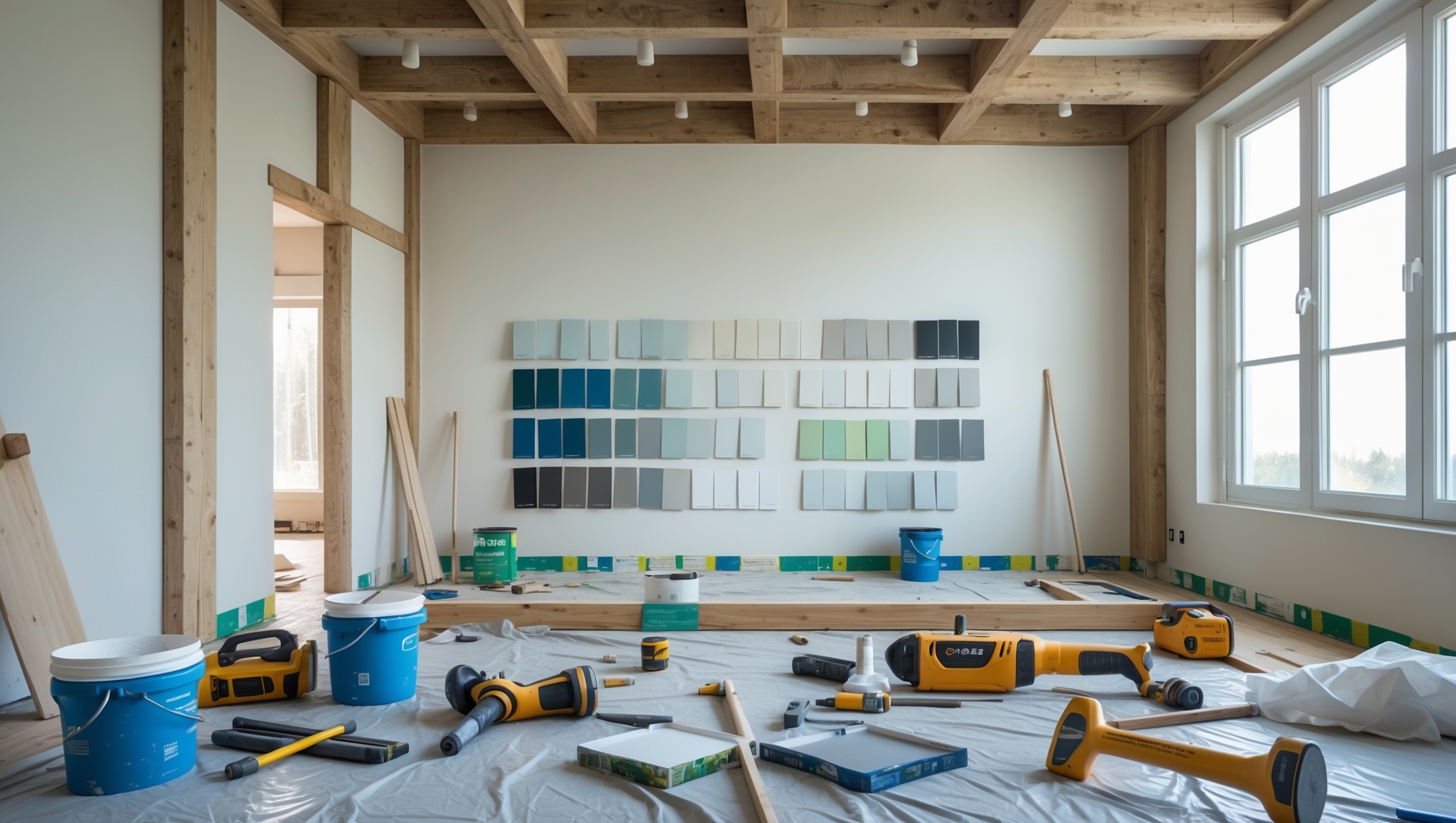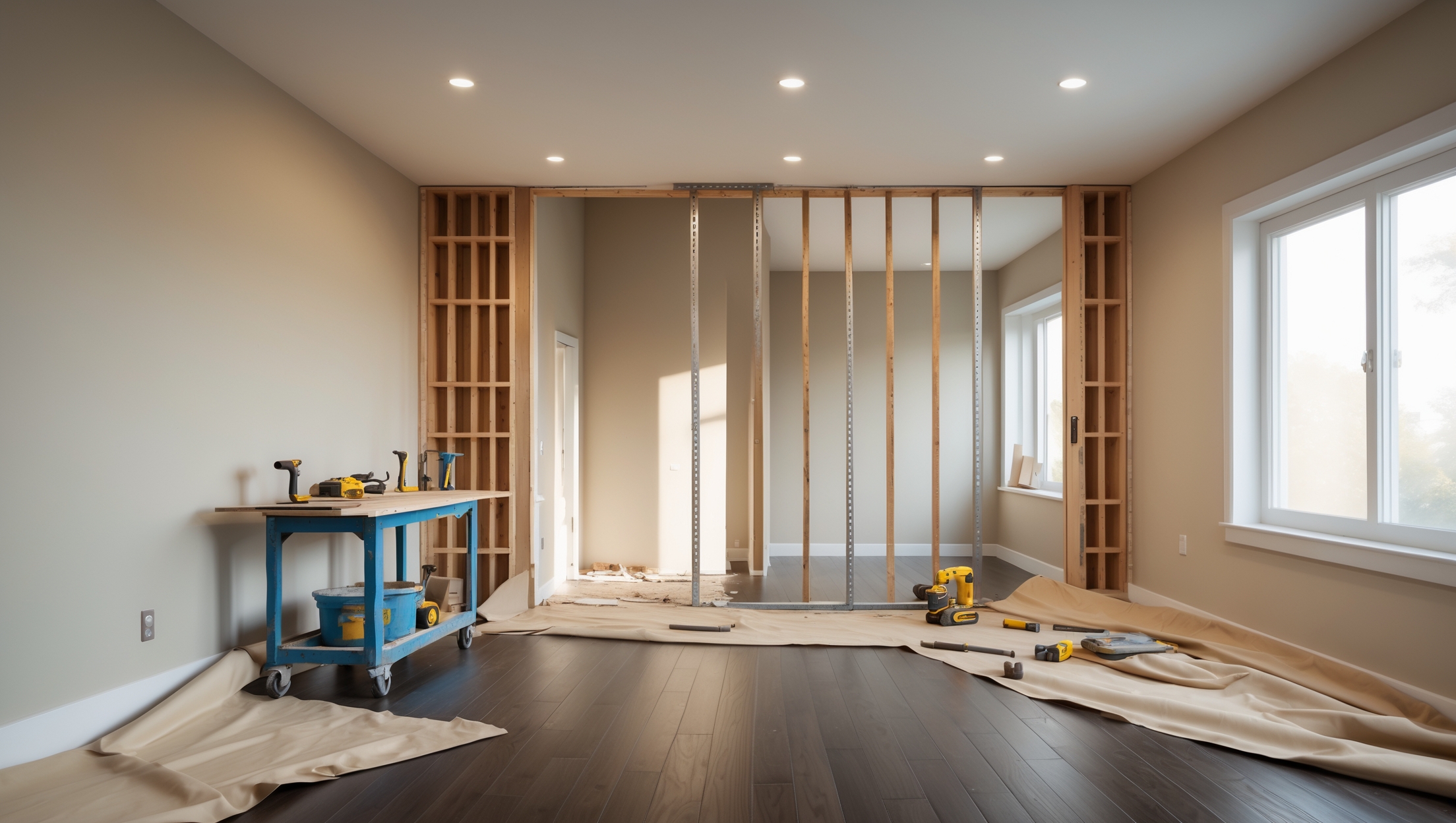Introduction: The Truth Behind Home Improvement Myths
Home improvement projects can be exciting, rewarding, and even profitable. But with so much information floating around—advice from friends, TV shows, online videos, and social media posts—it can be tough to separate solid advice from persistent myths. Acting on these misconceptions can end up costing you time, money, and even your home’s long-term value. In this post, we’ll examine some of the most common home improvement myths, explore where they come from, and give you the real facts you need for smarter decisions. Whether you’re a seasoned DIY-er or just planning your first upgrade, debunking these myths will help you avoid unnecessary pitfalls and maximize both comfort and value in your home.
Myth #1: All Renovations Increase Your Home’s Value
Why This Myth Persists
It’s easy to assume that any improvement—whether it’s updating a bathroom or adding a deck—will automatically boost your home’s resale value. Popular TV shows and online articles often tout renovations as a surefire path to profit. However, not all upgrades pay off the way you might expect.
The Reality
Some projects offer excellent returns, while others may barely break even—or could even decrease your home’s value if executed poorly or out of sync with neighborhood norms. For example:
- Major Kitchen Remodels: While a refreshed kitchen can be attractive, extensive luxury upgrades often recover only 60-80% of their cost.
- Swimming Pools: In colder climates or family neighborhoods, pools can actually deter buyers due to maintenance and safety concerns.
- Over-Personalized Spaces: Highly specific or trendy decor choices may not appeal to future buyers.
Before committing to a project, research local comps and talk to real estate professionals to ensure your investment aligns with market demand.
Myth #2: DIY Is Always Cheaper Than Hiring a Pro
Why This Myth Persists
The popularity of DIY culture and endless tutorial videos make many projects look easy and affordable. Skipping contractor fees seems like a clear path to savings.
The Reality
DIY can save money on simple projects, but it’s not always the most cost-effective choice:
- Potential for Mistakes: Incorrect installations may require expensive fixes later.
- Hidden Costs: Specialized tools, permit fees, and wasted materials can add up quickly.
- Time Investment: Your time has value—especially if you need to take off work or spend weekends on repairs.
- Insurance and Safety Risks: Faulty electrical or plumbing work can void insurance or create hazards.
Weigh the complexity, your skill level, and all hidden costs before deciding to tackle a project yourself.
Myth #3: Permits Are Optional for Small Projects
Why This Myth Persists
Many homeowners believe that permits are only required for major renovations. This myth is reinforced by stories of friends who “never pulled a permit and had no issues.”
The Reality
Even smaller projects often require permits—think fences, decks, window replacements, and electrical upgrades. Skipping permits can lead to:
- Fines and Legal Issues: Unpermitted work can result in fines and legal complications if discovered.
- Problems Selling the Home: Unpermitted work may delay or derail a sale, as buyers and lenders require proper documentation.
- Insurance Denials: Insurance might not cover damages caused by unpermitted work.
Always check with your local building authority before starting any project.
Myth #4: Energy-Efficient Upgrades Always Pay for Themselves
Why This Myth Persists
With increasing attention on sustainability, many product manufacturers and contractors tout the long-term savings of energy-efficient appliances or windows.
The Reality
While energy-efficient upgrades can reduce utility bills and improve comfort, the payback period can be longer than advertised:
- Upfront Costs: High-efficiency windows or solar panels require significant initial investment.
- Variable Savings: The actual savings depend on your local climate, existing home efficiency, and energy prices.
- Not All Upgrades Are Equal: Sealing leaks or adding insulation often offers better returns than high-end gadgetry.
Calculate expected savings using your utility data, and prioritize upgrades with the best ROI for your situation.
Myth #5: You Can Skip Insurance for Small Renovations
Why This Myth Persists
Some homeowners assume that minor renovations don’t warrant changes to their insurance policy, particularly if they’re doing the work themselves.
The Reality
Even small projects can introduce new risks:
- Liability: If a visitor is injured during your renovation, you could be held liable.
- Property Value: Improvements can change your home’s replacement value, affecting your coverage needs.
- Contractor Risks: If you hire professionals, verify their insurance to avoid claims against your policy.
Always notify your insurer before starting any significant work to ensure you’re protected.
Myth #6: Open-Concept Floor Plans Are Always Better
Why This Myth Persists
Open-concept living spaces are a mainstay in design magazines and home makeover shows. The impression is that open layouts are modern, desirable, and boost value.
The Reality
Open floor plans have advantages—spaciousness and natural light—but they’re not universally better:
- Noise and Privacy: Fewer walls mean less privacy and more sound transfer.
- Heating and Cooling: Larger open spaces can be harder to heat or cool efficiently.
- Resale Preferences: Some buyers, especially families or remote workers, prefer defined rooms for specific functions.
Consider your lifestyle before knocking down walls. Sometimes, partial openings or glass partitions offer the best of both worlds.
Myth #7: High-End Materials Always Deliver the Best Results
Why This Myth Persists
The allure of premium materials—marble countertops, imported tiles, top-tier appliances—can be strong. Many believe that the highest-priced options yield the best performance and returns.
The Reality
Quality matters, but the highest price tag doesn’t guarantee durability, function, or style:
- Maintenance: Some high-end materials require more care (e.g., marble stains easily).
- Neighborhood Standards: Over-improving can make your home harder to sell.
- Imitation Products: Many mid-range products offer impressive looks and performance at a fraction of the cost.
Choose materials that balance aesthetics, durability, budget, and neighborhood context.
Myth #8: You Can Live Through Any Renovation
Why This Myth Persists
TV shows often condense months of chaos into a tidy montage, making major renovations appear less disruptive than they truly are.
The Reality
Living through significant construction can be stressful and even hazardous. Considerations include:
- Dust and Debris: Air quality can suffer, especially with kids or sensitive family members.
- Noise and Access: Contractors may need access to key areas at inconvenient times.
- Safety: Exposed wiring, unfinished floors, and open walls pose risks.
For extensive projects, consider temporary relocation or phasing the work to minimize disruption.
Myth #9: Quick Fixes are as Good as Proper Repairs
Why This Myth Persists
Online forums are full of “hacks” and shortcuts for home repairs. These seem appealing for saving time and money.
The Reality
Temporary solutions can mask bigger issues:
- Structural Problems: Covering cracks or leaks may allow damage to worsen.
- Code Violations: Non-compliant fixes can lead to safety hazards and inspection failures.
- Resale Issues: Home inspectors will spot shoddy work, affecting your sale price.
Invest in proper repairs to protect your home’s value and your family’s safety.
Myth #10: You Should Always Follow the Latest Trends
Why This Myth Persists
Trendy home features—think barn doors, bold tile, or matte black hardware—are featured everywhere. It’s tempting to think your home needs them to stay current.
The Reality
Trends come and go. Overly trendy updates can look dated quickly and may not appeal to future buyers. Instead:
- Focus on timeless design for big-ticket items (floors, cabinets, fixtures).
- Express personality with easily changeable decor (paint, curtains, accessories).
- Prioritize function and comfort for your own enjoyment.
Conclusion: Smarter Choices for Better Results
Home improvement is a journey—one that’s best navigated with facts rather than fables. As we’ve seen, many popular beliefs about renovations, DIY, and design are rooted in assumptions or outdated advice. By questioning these myths, you empower yourself to make data-driven decisions that align with your goals, budget, and lifestyle.
Before starting any project, take time to research, consult professionals when needed, and reflect honestly on your skills and needs. Remember that not all projects provide equal returns, and that shortcuts can lead to long-term headaches. Permits, insurance, and safety protocols are there for good reason, and your choices should reflect both current needs and future resale considerations.
Ultimately, the best home improvements are those that enhance your quality of life, stand the test of time, and respect your home’s character. When you approach projects with open eyes and a willingness to learn, you’ll avoid costly mistakes and enjoy the true rewards of homeownership—comfort, security, and pride in a job well done.


